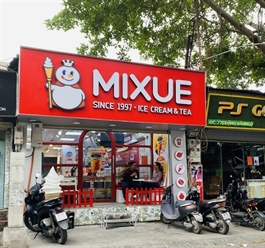Jan-May rubber exports grow 2.6% on-year but value drops nearly 14%
Jan-May rubber exports grow 2.6% on-year but value drops nearly 14%
Cambodia exported 107,938 tonnes of natural rubber latex in the first five months of 2023, up 2,690 tonnes or 2.6 per cent year-on-year, although the total value dropped by nearly 14 per cent, according to statistics from the General Directorate of Rubber (GDR) under the Ministry of Agriculture, Forestry and Fisheries.
The GDR reported that the exports were to the tune of $145,842,932, registering a per-tonne average of $1,351, which it said was down $252 or
16 per cent year-on-year. These figures imply that the total export value fell 13.50-13.62 per cent from $16.860-16.882 million in the year-ago period, accounting for rounding.
The Kingdom also exported 5,243 cubic metres of rubber wood in the January-May period, worth a total of $707,073, the GDR noted.
GDR head Him Aun pinned the drop in rubber export value on declines in the commodity’s prices seen across the world, amid dwindling demand driven by weak global economic growth brought on by the Russo-Ukrainian conflict and Sino-US geopolitical tensions, given the Cambodian rubber sector’s near-total reliance on foreign markets.
For reference, GDR figures show that Cambodia produced 108,089 tonnes of natural rubber latex in the January-May period, down 724 tonnes or 0.7 per cent year-on-year. This means 99.86 per cent of the rubber produced in the five-month period was exported, up from 96.7 per cent in the same time of 2022.
Speaking to The Post on June 25, Aun predicted that the arrival of more tyre factories would spur local demand for home-grown rubber, foster competition between domestic and export markets, and push up prices for the commodity.
The bulk of Cambodia’s latex is exported to Vietnam, China, South Korea, Malaysia, Singapore, Japan and the EU, he said.
There has recently been considerable interest in setting up tyre factories in the Kingdom, especially in the special economic zones (SEZ) of Svay Rieng and Preah Sihanouk provinces.
On June 23, the Council for the Development of Cambodia (CDC) announced that it had approved a final registration certificate for Chinese tyre maker Newbustar (Cambodia) Tire Co Ltd, part of the Chinese state-owned Doublestar Group, for a $138 million plant in UBE Snuol Special Economic Zone of Trapaing Sre village, Pi Thnou commune, Snuol district.
A ceremony formally marking the groundbreaking of the factory was held on May 9.
An SEZ, often portrayed as a kind of commercial oasis, is a specially designated area within a jurisdiction’s borders that is subject to different – typically more lenient – legal, administrative, and economic regulations than elsewhere in the same jurisdiction. It may also include unique tax, logistical, or one-stop service arrangements intended to draw in business and investment.
Cambodia Chamber of Commerce vice-president Lim Heng remarked that large-scale investments in rubber processing plants or tyres were a recent phenomenon in the Kingdom.
He expressed optimism that more tyre factories would reduce the local rubber sector’s dependence on exports and bring up prices for the milky white sap, extracted from the Hevea brasiliensis tree native to Brazil.
“Due to its high dependence on international markets, the price of Cambodian rubber varies with their demand, he said.
According to the GDR, Cambodia last year exported 372,900 tonnes or rubber latex worth $527.775 million, up 6,600 tonnes year-on-year. As of end-2022, the Kingdom devoted 404,578ha of land to rubber cultivation, 315,322ha or 77.94 per cent of that being tapped for latex.
According to Customs (GDCE), Cambodian exports of “rubber and articles thereof” clocked in at $541.661 million last year, up 28.34 per cent from $422.062 million in 2021 and up 230.28 per cent from $164.002 million in 2015 – representing an 18.61 per cent compound annual growth rate (CAGR) for the seven-year period.
The most recent Trading Economics data show that, of the Kingdom’s $422.06 million worth of Chapter 40 exports in 2021, $289.02 million went to Vietnam, $27.34 million to Malaysia, $19.47 million to China, $9.1 million to Singapore, $9.03 million to the US, $7.45 million to Canada, $6.13 million to India, $4.44 million to Spain and $1.3 million to Italy with the remaining $49 million going to other markets.
Strangely, the economic data provider did not have a figure for South Korea, which the Observatory of Economic Complexity (OEC) indicates held a 2.382-2.429 per cent market share in 2021, accounting for rounding. These sources combined offer an estimate of $10.055-10.251 million for the peninsular nation.















